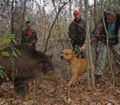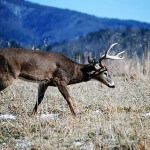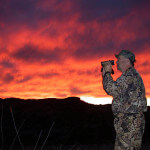Editor’s Note: Throughout the history of America, dogs have played a major role in the everyday lives of explorers, early frontiersmen and Native Americans and continue to do so today. When families first settled here, everybody able in the family had to work the family farm. So, they used a different kind of babysitter. The teenagers and the adults would leave the children playing in the front yard and their dog on the porch, watching and protecting the children and the house, while Mom, Dad and the older kids plowed, planted and picked crops.
Around 10,000 years ago, according to fossils, wolves and dogs split, with dogs becoming the only domesticated animals in the Americas. Native Americans used dogs as guards, hunters, fishermen, food, pets and beasts of burden to haul firewood and tents. Women in most tribes managed and trained dogs, often considered more valuable to the tribes than their children. Some tribes raised dogs:
* as foot warmers for its arthritic people;
* for their hair for weaving;
* with webbed feet to hunt otters (Tierra del Fuego at the tip of South America);
* to drive fish into nets (Patagonia);
* to hunt bison on the Great Plains by hitching the dogs to a travois that the Native Americans then knelt in to shoot the bison with their bows and arrows;
* to bay up moose;
* as a food source, to cure illnesses and to insure success in battle – mainly eastern North American and Plains Indians. The Apaches, Navahos and Incas wouldn’t eat dogs;
 Explorers’ Dogs – Often Used as Weapons:
Explorers’ Dogs – Often Used as Weapons:
On Christopher Columbus’s second trip to the New World in 1493, he brought Spanish dogs – 20 greyhounds and one mastiff – with him to use as weapons, since they were trained to attack and maul people. Before this in 1480, Spaniards had used these kinds of dogs to maim and kill natives in the Canary Islands and also allowed those dogs to eat the small children left at churches and mosques there. Later Spanish conquerors took these brutal dogs with them while exploring Mexico and the southeastern U.S., carrying Indian slaves for the dogs to eat.
Dogs of Colonial America – Helped Pilgrims and Puritans:
The English Sir Walter Raleigh in 1585 helped establish the colony of Roanoke Island, Virginia, and brought with him greyhounds to kill deer, bloodhounds to trail wounded game and mastiffs to kill wolves, bears and Indians. Dogs became a valued commodity, and the Virginia Assembly in 1619 passed a law forbidding the sale of, “Englishe dogs of quality, such as a mastiff, greyhound, bloodhound, land or water spaniel or any other Englishe dog.”
 The Pilgrims and the Puritans who settled the Northeast in 1620 used dogs to: guard their homes; manage livestock; kill wolves; keep Indians away; turn wheels powering spits, wells, machinery, bellows and churning; and pull carts. Their dogs were invaluable to their settlements. The Pilgrims and the Puritans also ordered wolf-killing greyhounds from Ireland that were considered according to correspondence as, “the best in the world” to kill the plentiful New World wolves.
The Pilgrims and the Puritans who settled the Northeast in 1620 used dogs to: guard their homes; manage livestock; kill wolves; keep Indians away; turn wheels powering spits, wells, machinery, bellows and churning; and pull carts. Their dogs were invaluable to their settlements. The Pilgrims and the Puritans also ordered wolf-killing greyhounds from Ireland that were considered according to correspondence as, “the best in the world” to kill the plentiful New World wolves.
During the French and Indian War when the colonies fought with the British against France and Spain, countries’ that had expanded into eastern North America, the Massachusetts legislature approved, “the buying up and maintaining of dogs along the northern border of the state to hunt after Indians.” The colonists also used dogs during the war to haul supplies and wounded fighters in sledges (travois). In 1757, Benjamin Franklin asked the Pennsylvania legislature to obtain 50 mastiffs and handlers to hunt down Indians involved in the war, but the measure didn’t pass.
To learn more about a wide variety of outdoor subjects, in Kindle eBooks and print and Audible books including hunting, fishing and cooking, go to www.amazon.com/author/johnephillips.










